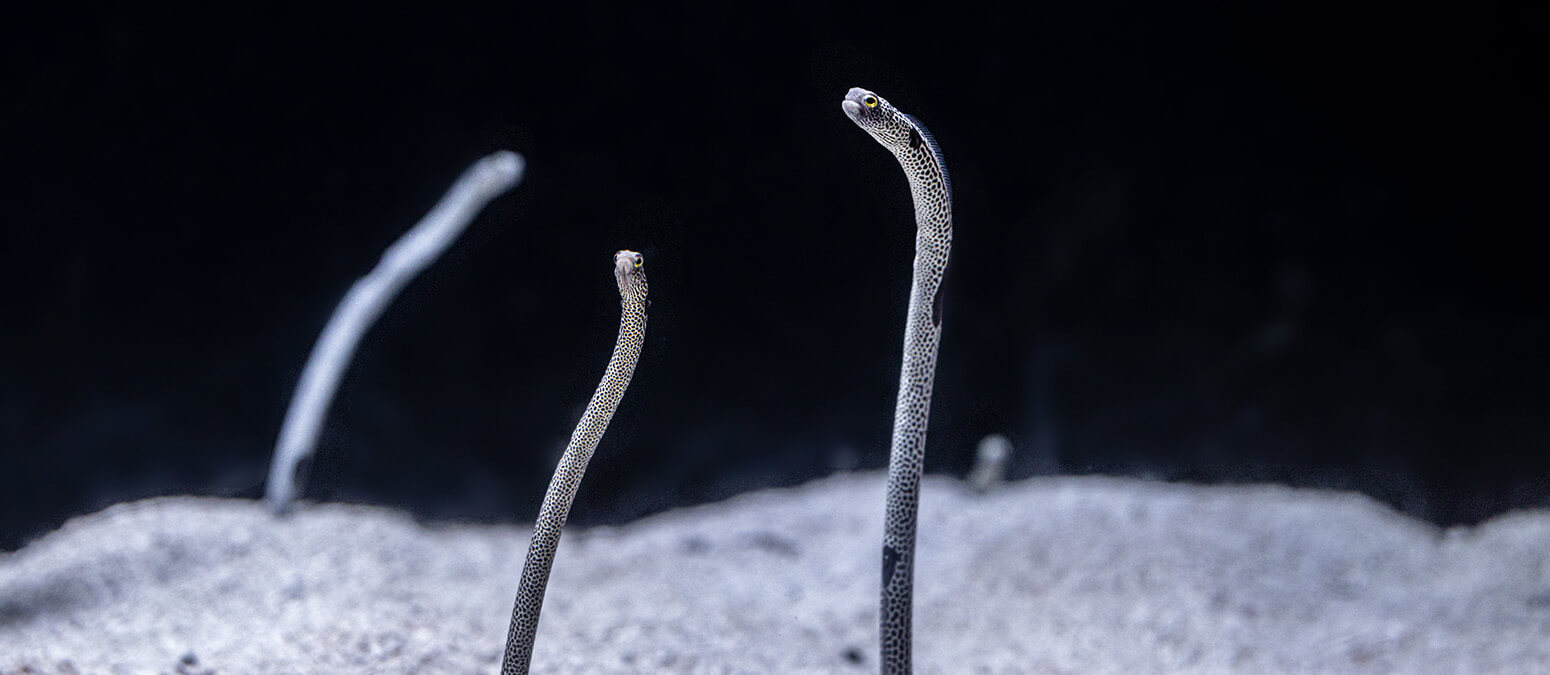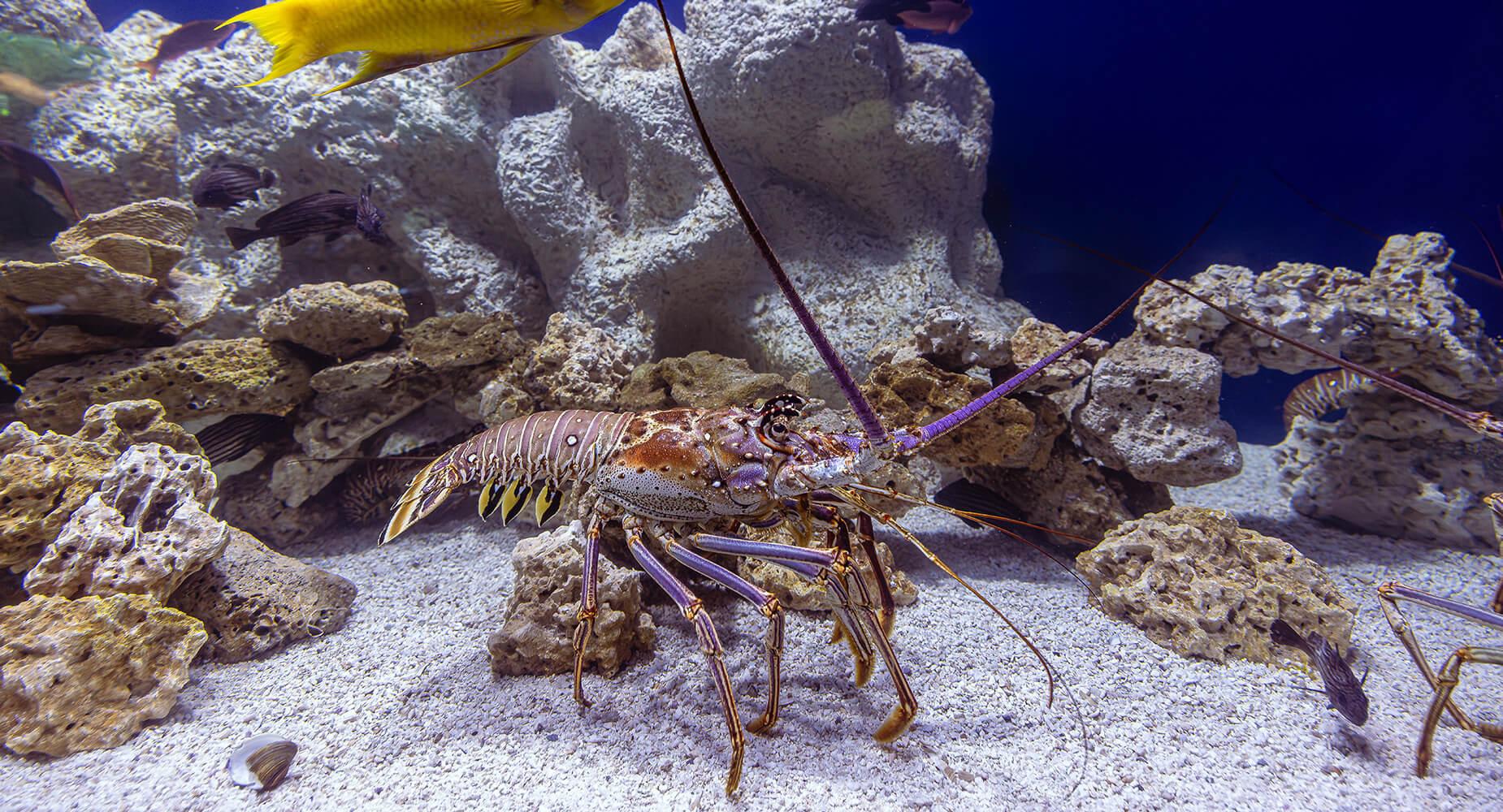
Animal Spotlight
Garden Eel
Heteroconger hassi
Not Your Grandma’s Garden
Often found poking out from sandy slopes and swaying with the currents in colonies of up to several hundred, it’s little wonder how garden eels earned their names.
Using their pointed tails to dig holes in the sand and body mucus to clump the sand together into a solid burrow, these slender eels spend most of their lives with more than half of their bodies buried in the sand. They extend their bodies and face into the current to find zooplankton to eat, hardly ever leaving their burrows — even to mate. Instead, males and females will move their burrows closer and stretch from adjacent burrows to spawn. Juveniles start out completely black and turn white with black spots as they mature.
Meet the Neighbors
Burrowed deep in our Shorelines gallery, garden eels share their habitat with an array of other species, located across from the Florida Spiny Lobster.

Florida Spiny Lobster
Florida spiny lobsters can grow bigger and bigger throughout their entire life spans in a process called indeterminate growth.
Ready to Visit?
Get acquainted with animals that make their home under rock pilings and bridges in coastal Florida.
